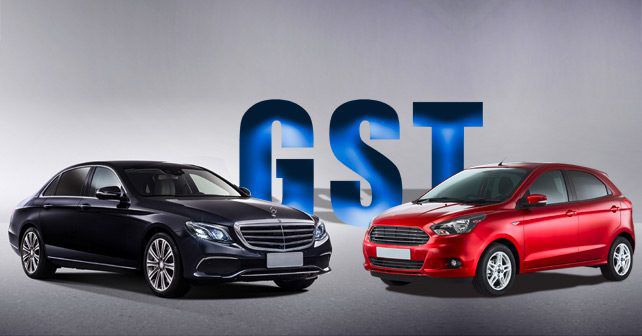
Siddharth points out the implications on the impeding GST regime on the Indian automobile industry.
The entire country is now anticipating the long-pending move to transition our indirect tax system to the pan-India GST or Goods and Services Tax. While the move is no doubt positive, and long overdue, it also spells confusion for a number of sectors – and indeed products. What level of GST automobiles will attract remains a little ambiguous too, even though the Finance Minister has spelled out that while automobiles will attract one tax rate, premium products will have a luxury cess imposed on them. In the present scenario, a premium, or larger car or SUV, attracts a duty pay out of up to 55%. This includes excise duty of 27%, VAT of 12.5-15%, a 1% national calamity contingency duty, a 1.8% auto cess, and the 1-4% infrastructure cess. Then there’s 4% octroy in some states.
If the maximum cess on larger cars gets capped at 15%, and the GST rate is set at the higher slab of 28%, the maximum duty one is likely to pay is 43% – which effectively means that prices may come down marginally. Road tax, though, has not been subsumed into the GST – and so will always remain an additional burden on buyers, which is a tad unfortunate considering that GST was meant to rationalise all taxes into one.
But here’s the kicker – the whole idea that cars will get cheaper – may affect the more premium end of the market and not the smaller cars where the effective duty would remain more or less the same. And that’s where I want to weigh in. You see, in the past, the idea of having a lower duty rate for small cars versus larger ones was simply to provide India a larger manufacturing footprint. The sub-4 metre excise rule compelled manufacturers to invest in plants, R&D and facilitate vendor bases in India. It also meant that we got increasingly competitive and inventive products – subcompact sedans for instance. But now that this has all been established, isn’t it high time we did away with the definition of a small car being regulated by size? Should emissions, consumption not play a role instead? Incentivise greener cars – I get that. But why penalise the aspirational Indian middle class with very high duties on cars that are not really luxurious? A Honda City or Toyota Corolla is not a luxury car after all, now is it? Perhaps it makes sense to impose a higher taxation, or in fact a cess, only on cars with a sticker price above Rs. 20 lakh? Don’t forget that car prices will go up in general starting October this year when the new safety norms kick in – and then again closer to 2020 when the country moves to the BS VI (Bharat Stage Six) emissions regime.
And that brings us to an even more pertinent question – why are cars in general still viewed as luxury items? In a country constantly admired for its burgeoning middle class, and in the absence of effective, adequate and safe public transport – why should that middle class pay more for small and very basic products as compared to their counterparts in more developed markets? After all, an 18% duty on a car is quite substantial. By reducing duties to say 12%, the government would actually enhance its overall revenues – as India will finally start to meet the global expectations in terms of volumes. Now environmentalists and city dwellers may lament the increasing car sales, but I’ll leave that debate to another day.
For now, the impending GST implementation will likely bring a slight reduction in prices (or so we hope), a likely reduction in prices for used cars and maybe a marginal difference on prices of two wheelers too. But where it will certainly help is to increase efficiencies, simplify logistics, and generally create a more transparent environment for business. This will translate to some major cost and time savings for the auto industry – allowing many manufacturers to shore up their margins. That is a happy scenario for consumers, as it also allows automakers to absorb marginal price impacts and not pass them on to consumers. So, on the whole, GST looks to be a great thing for our beloved sector. On the duties though, I remain despondent.























Write your Comment